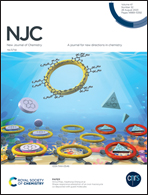Adsorption of Rhodamine B from aqueous solutions using polarity-tunable hyper-cross-linked resins
Abstract
Hyper-cross-linked resins have tremendous prospects for the removal of organic dyes from aqueous solutions due to their adjustable porosity, tunable polarity and diversified functionality, whereas the extreme hydrophobicity of the skeleton limits their application. Hence, it is essential for introducing polar functional groups in the construction of a highly polar hyper-cross-linked resin. In this work, we synthesized polar-modified hyper-cross-linked resins (HVPN-x) by introducing 3-aminobenzoic acid (3-AC) containing amino and carboxyl groups via a stepwise combination. The analysis results indicated that hydrophilicity significantly enhanced with the increase of the percentage of 3-AC. The water diffusion time of HVPN-6 can be found to be quite fast and the complete diffusion of water droplets occurs within 0.28 s. The adsorption experiment results demonstrate that HVPN-6 exhibited a significant increase in RhB adsorption capacity, equivalent to 2.6 times that of pristine HVPN-0. This is probably because the uploaded amino and carboxyl groups are conducive to equilibrium adsorption due to polar matching, and hydrogen bonding is possibly formed between the resin and Rhodamine B. Above all, the polar hyper-cross-linked resin modified with the 3-AC monomer may be a potential candidate for Rhodamine B adsorption from aqueous solution owing to its excellent polarity.



 Please wait while we load your content...
Please wait while we load your content...